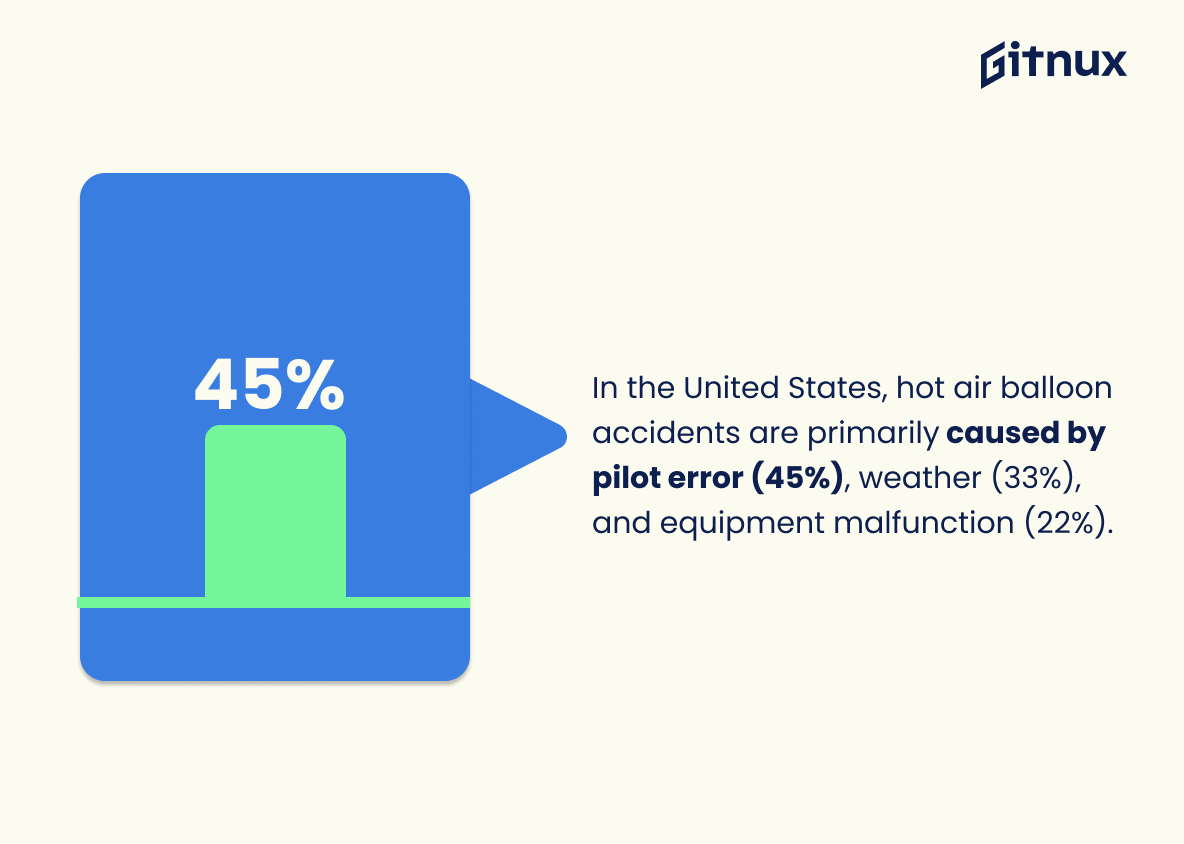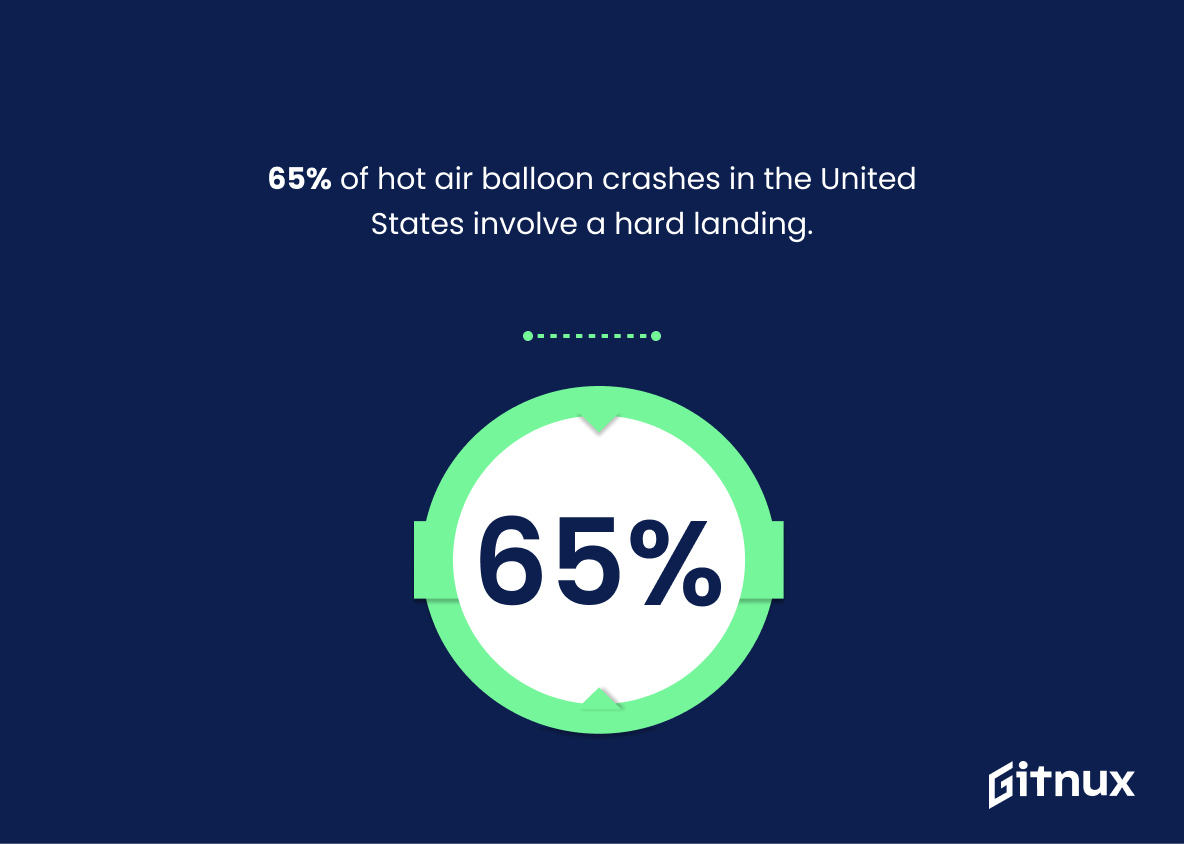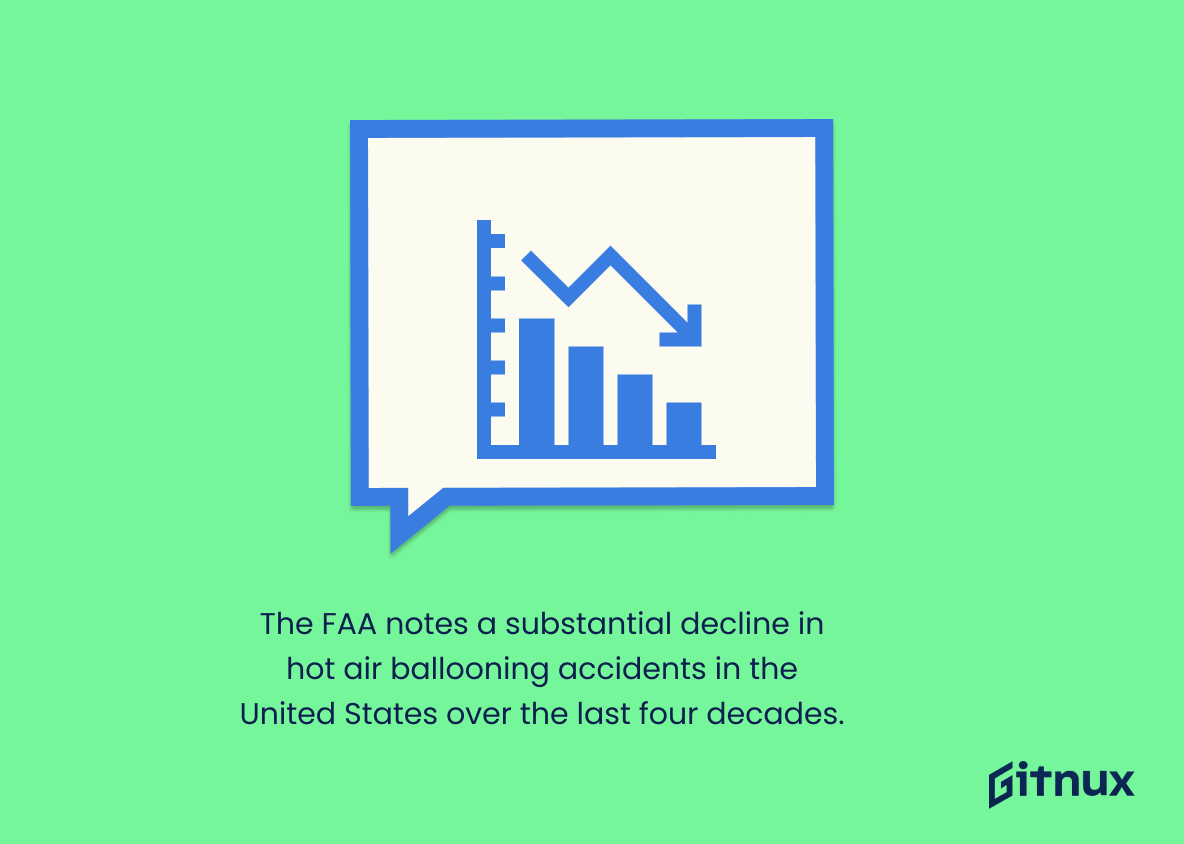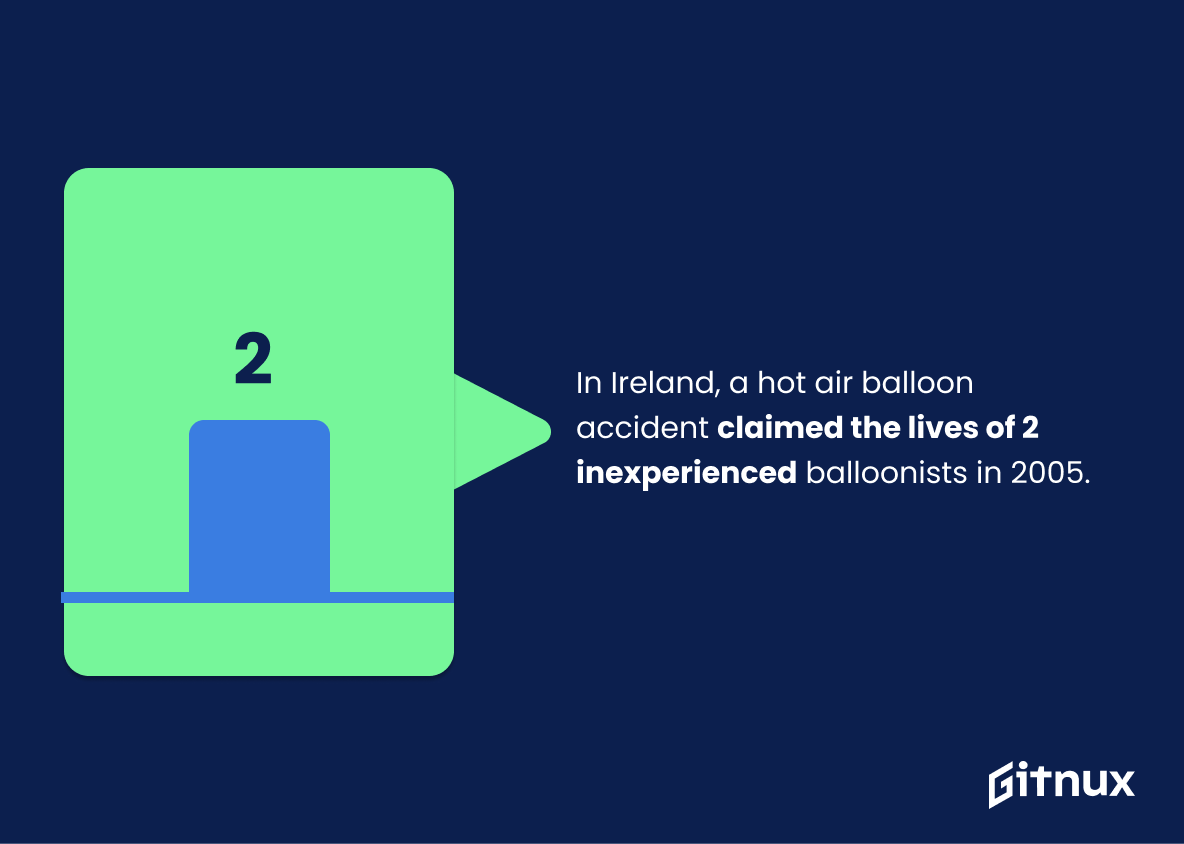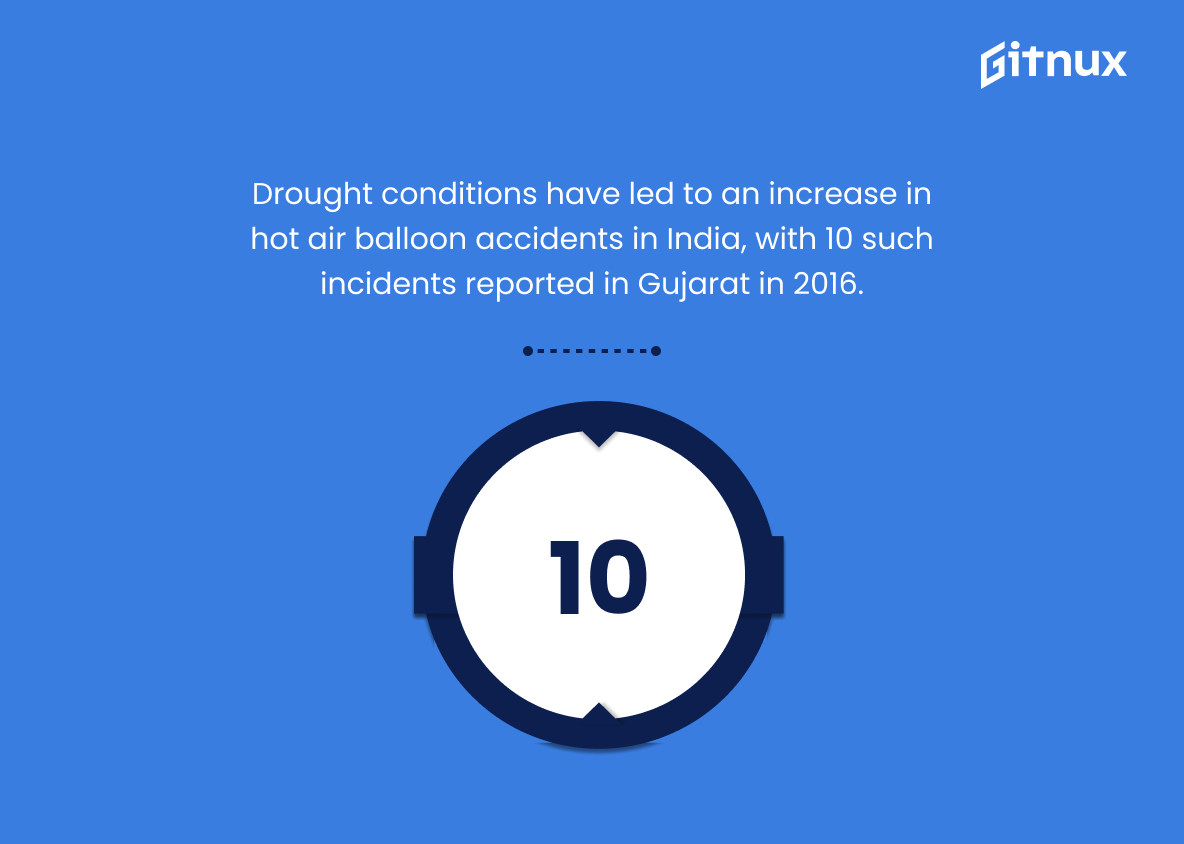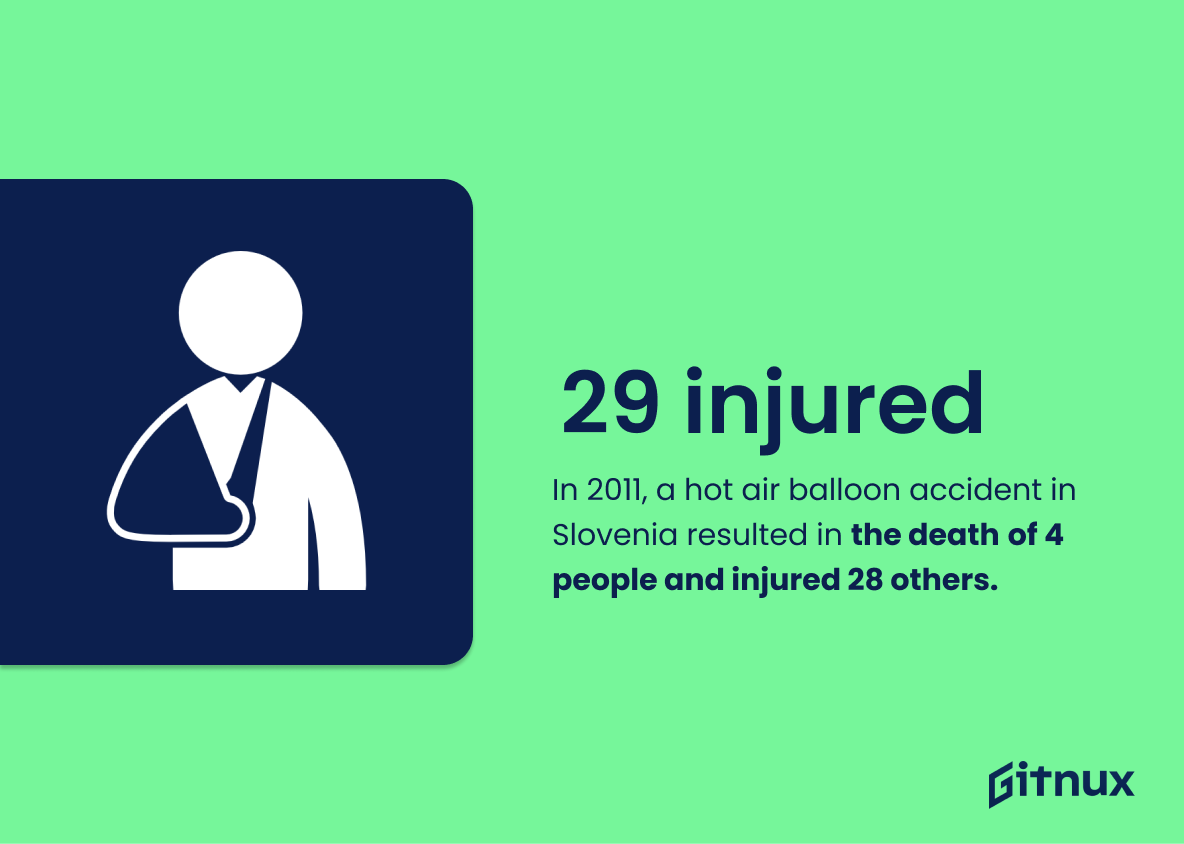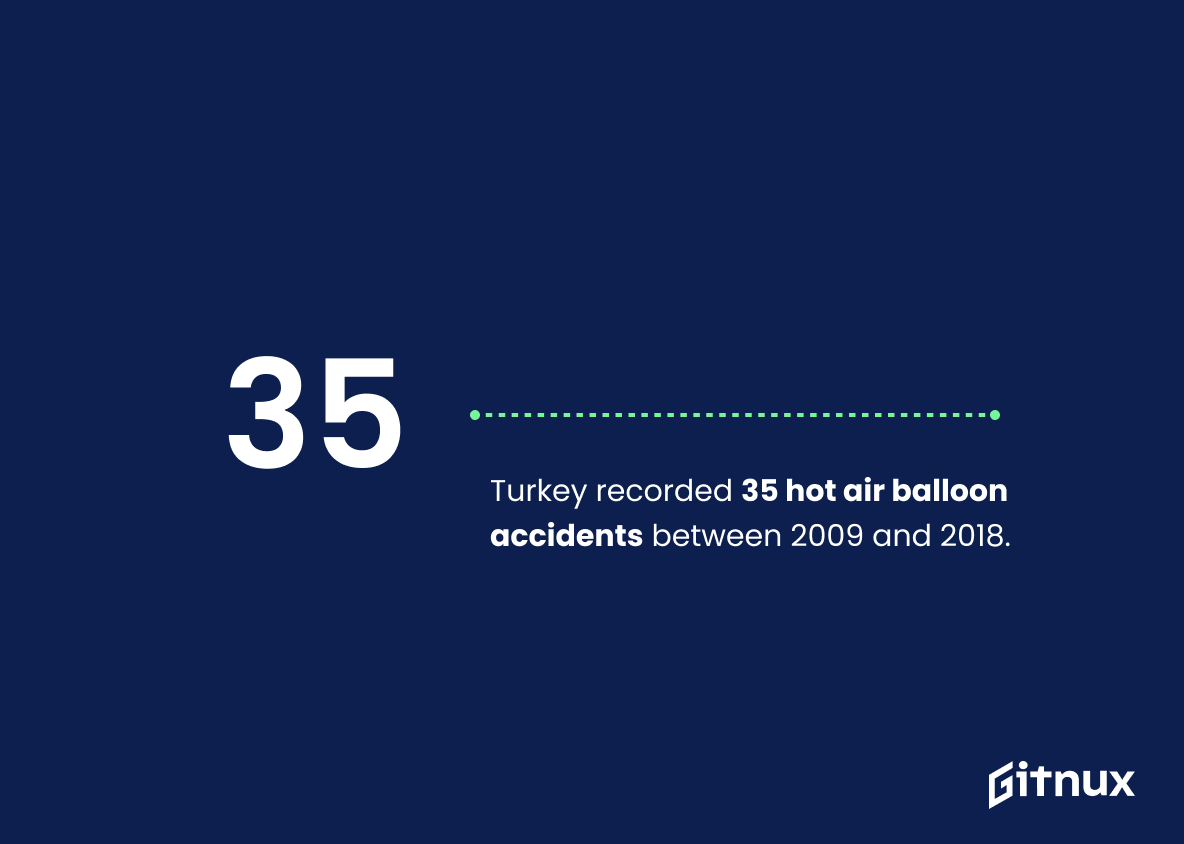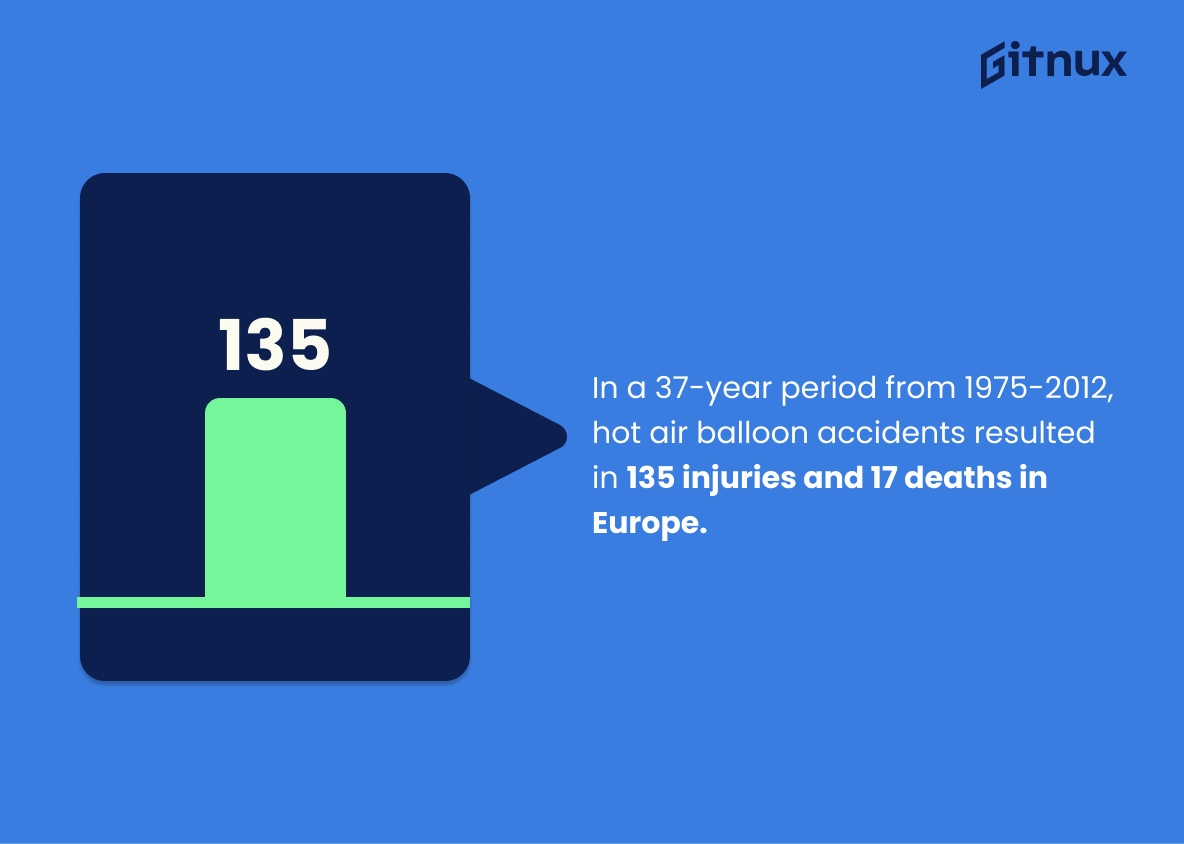Hot air ballooning is a popular activity that has been enjoyed by people around the world for centuries. Unfortunately, hot air balloon accidents do occur and can have devastating consequences. This blog post will explore some of the statistics related to hot air balloon crashes in various countries since 1964, including fatalities, injuries, causes of accidents and more. We’ll look at data from the United States, United Kingdom, Egypt, Colombia Switzerland New Zealand Australia Ireland India Brazil Belgium Slovenia Turkey and Europe as a whole to get an overview of this issue on a global scale. Read on to learn more about these alarming figures.
This statistic is a stark reminder of the potential danger of hot air ballooning. It serves as a warning to those considering taking a ride in a hot air balloon, and highlights the importance of taking safety precautions when doing so. It also provides a valuable insight into the frequency of hot air balloon incidents in the United States, and can be used to inform policy decisions and safety regulations.
A study analyzing the years from 2000-2011 found that there were 78 hot air balloon crashes in the United States.
This statistic is a stark reminder of the potential danger of hot air ballooning. It highlights the fact that, over the course of 11 years, 78 crashes occurred in the United States alone. This serves as a warning to those considering taking a hot air balloon ride, and emphasizes the importance of taking safety precautions.
Hot Air Balloon Crash Statistics Overview
The deadliest hot air balloon crash in history occurred in 2013 in Luxor, Egypt, claiming 19 lives.
This statistic serves as a stark reminder of the potential danger of hot air ballooning. It highlights the fact that, despite the beauty and serenity of the activity, it can still be incredibly hazardous and should not be taken lightly. The tragedy in Luxor serves as a reminder of the importance of safety precautions and the need for experienced pilots when engaging in hot air ballooning.
The rate of hot air ballooning accidents is relatively low, totalling just 3.3% in the United States between 1964 and 2014.
This statistic is a testament to the safety of hot air ballooning, showing that despite its inherent risks, the activity is still relatively safe. It is an important piece of information to consider when discussing hot air balloon crash statistics, as it provides a baseline for comparison and helps to put the risks of the activity into perspective.
Between 2000 and 2016, hot air balloon crashes resulted in 91 fatalities.
This statistic is a stark reminder of the dangers of hot air ballooning. It highlights the fact that, despite the romanticized image of hot air ballooning, it can be a risky activity that has resulted in the loss of 91 lives over the past 16 years.
In the United States, hot air balloon accidents are primarily caused by pilot error (45%), weather (33%), and equipment malfunction (22%).
This statistic is a crucial piece of information when it comes to understanding the causes of hot air balloon accidents. It reveals that pilot error is the leading cause, followed by weather and equipment malfunction. This information is essential for anyone looking to gain a better understanding of the risks associated with hot air ballooning and the steps that can be taken to reduce the likelihood of an accident.
65% of hot air balloon crashes in the United States involve a hard landing.
This statistic is a telling indication of the dangers of hot air ballooning. It highlights the fact that hard landings are a major cause of crashes in the United States, and that safety should be a top priority for anyone considering taking a hot air balloon ride.
In 2007, Colombia experienced a hot air balloon crash that hospitalized more than 10 people, making it one of the worst ballooning accidents in the nation’s history.
This statistic serves as a stark reminder of the potential danger of hot air ballooning, highlighting the fact that even in a nation with a long history of ballooning, accidents can still occur with devastating consequences. It is a cautionary tale that should not be forgotten, and serves as a reminder of the importance of safety when engaging in this activity.
The Federal Aviation Administration (FAA) reports that the number of hot air ballooning accidents in the United States has significantly decreased over the past 40 years.
This statistic is a testament to the progress that has been made in the safety of hot air ballooning over the past four decades. It is a reminder that, despite the occasional tragedy, the industry is taking steps to ensure the safety of its passengers and operators. This statistic is a valuable piece of information for anyone looking to learn more about the risks associated with hot air ballooning and the measures being taken to reduce them.
In 1997, Switzerland experienced its deadliest hot air balloon accident, with 5 fatalities.
This statistic serves as a stark reminder of the potential danger of hot air ballooning. It highlights the fact that, even in a country with a strong safety record, such as Switzerland, accidents can still occur with tragic consequences. It is a reminder that, while hot air ballooning can be a thrilling and enjoyable experience, it is important to take all necessary safety precautions.
In Ireland, a hot air balloon accident claimed the lives of 2 inexperienced balloonists in 2005.
This statistic is a stark reminder of the dangers of hot air ballooning, particularly for those who are inexperienced. It serves as a cautionary tale for those considering taking part in the activity, and highlights the importance of taking the necessary safety precautions.
Drought conditions have led to an increase in hot air balloon accidents in India, with 10 such incidents reported in Gujarat in 2016.
This statistic is a stark reminder of the dangers of drought conditions and how they can lead to an increase in hot air balloon accidents. It highlights the need for caution and safety measures when operating hot air balloons in areas affected by drought, as well as the importance of understanding the risks associated with such activities. This statistic is a powerful reminder of the potential consequences of drought and the need to take appropriate precautions when engaging in hot air ballooning.
In 2011, a hot air balloon accident in Slovenia resulted in the death of 4 people and injured 28 others.
This statistic serves as a stark reminder of the potential dangers of hot air ballooning. It highlights the fact that, despite the thrill and beauty of the experience, there is an inherent risk that can have devastating consequences. It is a reminder that safety should always be a priority when engaging in this activity.
In 2009, Belgium experienced a tragic hot air balloon accident, killing one and injuring seven people.
This statistic serves as a stark reminder of the potential dangers of hot air ballooning. It highlights the fact that, despite the beauty and serenity of the activity, it can still be incredibly hazardous and lead to devastating consequences. It is a reminder that safety should always be the top priority when engaging in hot air ballooning.
Turkey recorded 35 hot air balloon accidents between 2009 and 2018.
This statistic serves as a stark reminder of the potential risks associated with hot air ballooning. It highlights the need for caution and safety measures when engaging in this activity, as 35 accidents in a span of nine years is a significant number.
In a 37-year period from 1975-2012, hot air balloon accidents resulted in 135 injuries and 17 deaths in Europe.
This statistic paints a stark picture of the dangers of hot air ballooning in Europe over the past 37 years. With 135 injuries and 17 deaths, it serves as a reminder of the risks associated with this activity and the importance of taking safety precautions.
Conclusion
Hot air ballooning is a popular activity around the world, but it can also be dangerous. According to statistics from various sources, there have been 1,198 hot air balloon incidents in the United States since 1964 and 78 crashes between 2000-2011. In the United Kingdom 21 people have died due to hot air balloon accidents since 1964 while 91 fatalities were reported across Europe between 1975-2012. The deadliest accident occurred in 2013 in Luxor Egypt claiming 19 lives while 65% of US crashes involve hard landings. Pilot error (45%), weather (33%) and equipment malfunction (22%) are some of the primary causes for these accidents with drought conditions leading to an increase in India’s number of incidents over recent years. Despite this data showing that hot air balloons can be risky at times, overall safety has improved significantly as evidenced by FAA reports which show a decrease in crash rates over 40 years time period
References
0. – https://www.theprint.in
1. – https://www.eur-lex.europa.eu
2. – https://www.faa.gov
3. – https://www.apnews.com
4. – https://www.welt.de
5. – https://www.easa.europa.eu
6. – https://www.link.springer.com
7. – https://www.rte.ie
8. – https://www.reuters.com
9. – https://www.eltiempo.com
10. – https://www.bbc.com
11. – https://www.ncbi.nlm.nih.gov
12. – https://www.ntsb.gov



